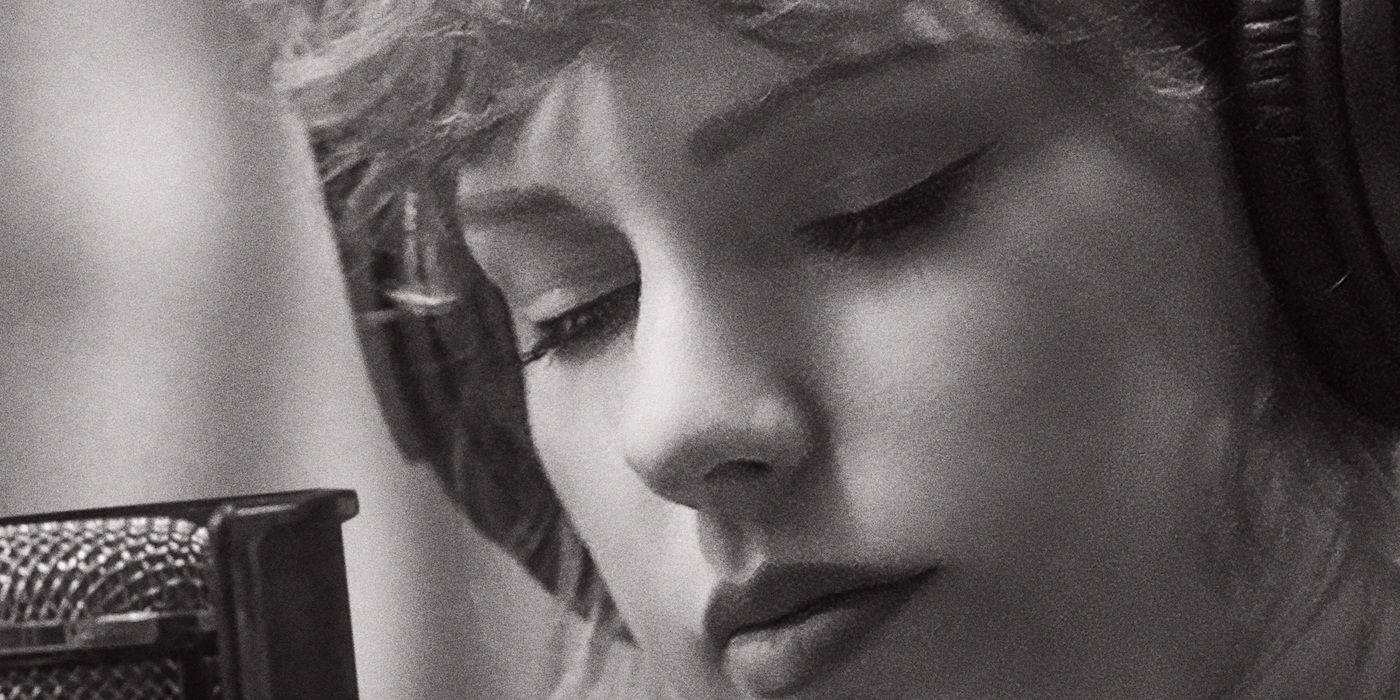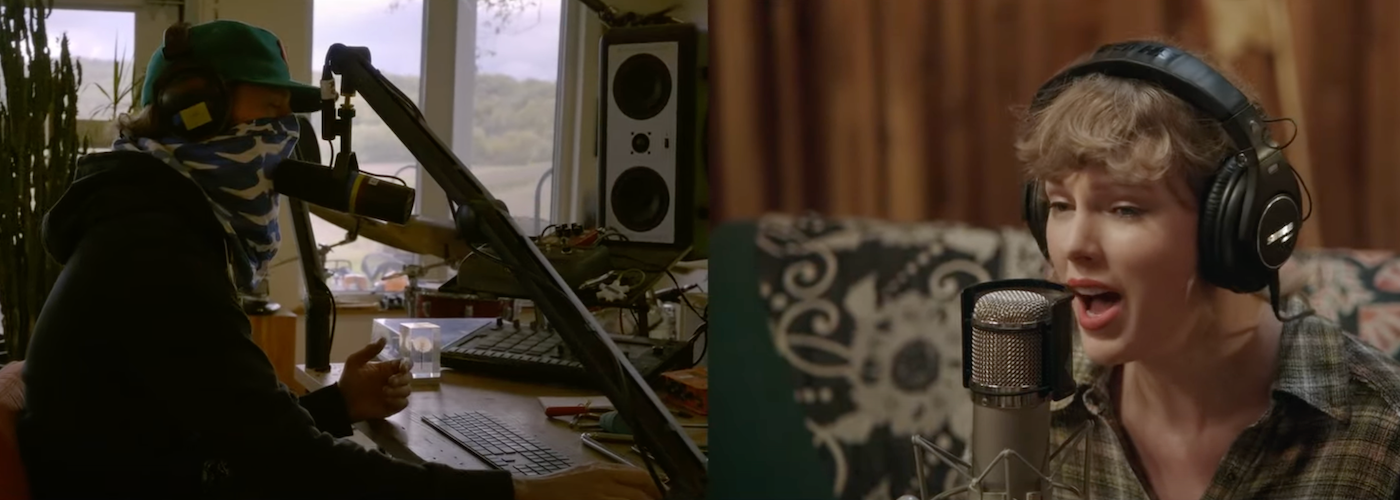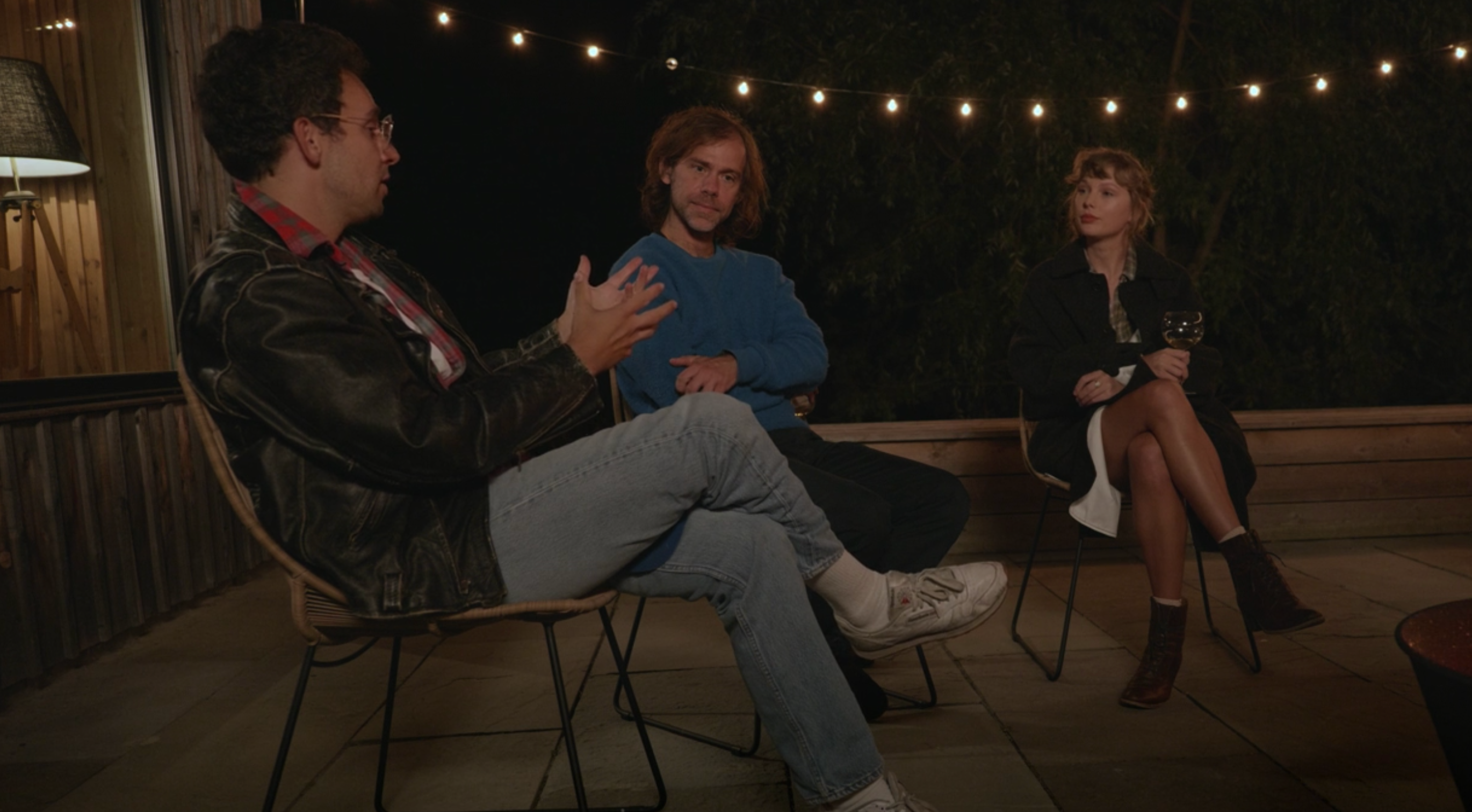A few days ago, Taylor Swift posted a black-and-white photo of herself on her Instagram. Perched on an overstuffed couch, the caption read, “Not a lot going on at the moment.” She made a similar post on April 27, back when she was deep in production (in secret!) on her eighth studio album, July’s folklore. Immediately fans connected the dots and knew that something was up. That something wound up being Folklore: The Long Pond Studio Sessions, a brand new, feature-length documentary that combines live performances of the album’s 17 tracks with impromptu conversations between Swift and her key collaborators. And like the album, this new documentary was a surprise release, debuting on Disney+ a few hours after the news broke that it existed at all. The resulting film, as tender and nuanced as the album itself, illuminates the thought process and emotional perspective of what is arguably one of Swift’s very best albums.
Folklore: The Long Pond Studio Sessions is named for a secluded recording studio in Upstate New York that looks like it was designed by the cultists from Midsommar and was one of the places where the album was put together. (And, yes, points are deducted for them not filming in Swift’s actual haunted coastal home, the inspiration for one of my favorite tracks on the record, “The Last Great American Dynasty.”) At the very beginning of the movie, we’re introduced to Swift’s two main collaborators on the album – Jack Antonoff, the goofy and affable Bleachers mastermind who has been working closely with Swift since 1989; and Aaron Dressner, founding member of indie rock institution The National. According to the album credits, the pair only collaborated on one track on folklore, which makes the rest of the movie, with the three of them playing together, really interesting. Equally fascinating: that this was the first time the three of them had actually been in the same place together, even though they are the combined architects of one of the year’s biggest albums.
The performances themselves, which make up the bulk of the documentary, are spare and gorgeous. Swift is seated, in an oversized shirt-dress, on a rumpled couch, singing directly into a microphone, while Antonoff and Dressner each man an instrument (or toggling between an instrument and some kind of electronic doodad) while an engineer, mostly unseen behind a bank of computer screens, fiddles away with levels and whatnot. (Unsurprisingly, a live album of the same name is being released concurrently with the film.) The only movement comes from a vaguely sinister, TARS-like computerized camera that you can occasionally see scanning the recording session in the background. With the camera so close to Swift’s face, you can detect each subtle emotional shift in every song, and it invites you in, creating an even more intimate bond between the listener/watcher and the song itself. And if, for some reason, you have failed to recognize Swift as one of the greatest songwriters of her generation, well, buckle up. After watching this, it’s irrefutable.
At one-point Bon Iver (real name: Justin Vernon), who duets with Swift on album highlight “Exile,” beams in to sing along with her. Still at his studio in Wisconsin and, whether because of the virus or in service of his own mysterious persona, Iver is masked and wearing a hat, less a human than a soulful hologram. But it works completely; the singular power of the song comes through like a bolt of lightning even robbed, like the rest of the performances, by much of the electronic and orchestral embroidery that gave the album tracks their unique texture.
As far as the interstitial material, there are definitely moments that demand your attention and some that reveal previously held secrets from the production. Perhaps the biggest bombshell is that William Bowery, a mysterious figure who has two songwriting credits on the album, leading to rampant speculation, is actually Swift’s boyfriend, British actor Joe Alwyn. (Current speculation is that the name comes from William, Alwyn’s composer grandfather, and the Bowery Hotel, which is where Swift and Alwyn shared their first kiss at a Kings of Leon concert in 2016.) Elsewhere, Swift gets into heartfelt conversations with both Antonoff and Dressner about what went into the album; the feelings of isolation and heartache that inspired some of the most powerful songs and her general approach to the songwriting, which involved less personalized anecdotes and instead relied on the creation of fictional characters whose storylines weave throughout the album. (She mentions that she is keenly aware that listeners pick apart her songs in an attempt to learn the truth behind the tabloid headlines.) Antonoff is the more active personality, but at one point the otherwise terse Dressner opens up about his depression, a moment that is both incredibly vulnerable and also powerful (it also explains why the album is such a force). At one point Swift says that the more narrative approach to the songwriting was inspired by her consumption of movies during quarantine and, for one song, her obsession with the Michael Jordan basketball documentary The Last Dance. Celebrities, they’re just like us.
If there is one letdown of the documentary, it’s Swift’s reluctance to talk about “Betty,” a song that many in the fandom have championed as a queer anthem, given its perspective and lyrical undercurrents. While Swift has denied the song was meant to have any gay subtext, it would have been nice if she had taken the opportunity, in the documentary, to acknowledge how much it meant to so many of her fans (even if what they were responding to was unintentional). Few artists are as keenly tuned into their fanbase as Swift, which makes the omission even more baffling (and bordering on hurtful). Instead, she remarks about how it fits into the loose narrative framework sprinkled throughout the album.
But overall Folklore: The Long Pond Studio Sessions, which Swift directed and produced herself (she also cheekily credits herself for her tussled hair), is a winning examination and celebration of the recently Grammy-nominated album, and a look at one of the world’s biggest pop stars at her most vulnerable and artistically ambitious. Only Swift can put out of her very best albums in the middle of a global catastrophe and release two (!) of the year’s most compelling documentaries (see also: Miss Americana on Netflix), seemingly by sheer force of will. And hey, at least we know who William Bowery is now.
Grade: A-



